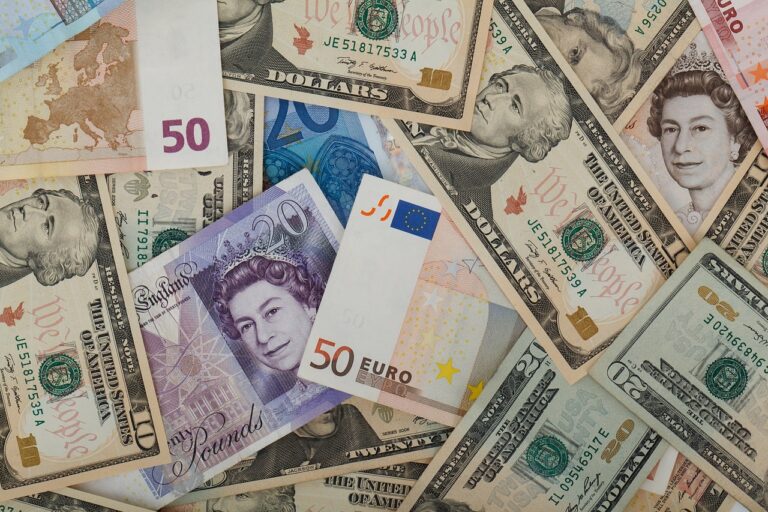Inflation is the rate at which an economy’s overall level of pricing for goods and services rises over time. When the inflation rate is high, each unit of currency purchases fewer goods and services. As a result, inflation erodes money’s buying power.
Deflation, or a prolonged decline in the price level of goods and services, is the inverse of inflation. The Consumer Price Index is a typical metric of inflation, which is calculated by taking the price of a fixed basket of goods and services and comparing it with the prices of the same basket at an earlier period.
Table of Contents
Why is global inflation currently so high
There are several reasons for high inflation globally. One reason is the increasing cost of energy and food, also due to the war in Ukraine. This puts upward pressure on prices for other goods and services.
Another reason is the weak US dollar, which makes imported goods more expensive. Additionally, global growth has been strong in recent years, leading to higher demand and prices for many goods and services.
Finally, central banks around the world have been gradually increasing interest rates, which can contribute to higher inflation.
Inflation may affect an economy in both good and bad ways. On the one hand, it encourages individuals to spend rather than conserve their money, which can boost economic growth. On the other hand, high inflation can lead to higher interest rates, which can hurt economic growth. Additionally, high inflation can be very disruptive and difficult for people to adjust to, particularly if it is unexpected.
While high inflation can be a challenge for policymakers, there are a number of ways to help contain it. One is to increase interest rates, which can help slow economic growth and reduce demand. Another is to provide more information to the public about inflation and its effects on the economy so that people can make more informed decisions about spending and saving money.
Finally, policies that help increase productivity, such as investment in education and infrastructure, can also help to reduce inflationary pressure in the long run.
What is the outlook for global inflation in 2023?
In 2023, global inflation will remain low, averaging around 2 percent. This is due to continued economic expansion and low-interest rates globally. However, some risks could lead to higher inflation, such as an increase in energy prices or a pick-up in wage growth. Overall, though, inflation is expected to remain relatively muted in 2023.
One of the primary elements influencing the cost of living in 2023 is the state of the global economy. If the economy continues to expand at a moderate pace, as is currently expected, then inflation will likely remain low. This is because when economic growth is slow, there is often excess capacity in the economy, which puts downward pressure on prices.
In addition, low-interest rates are also expected to remain a key driver of inflation in 2023. Central banks worldwide are expected to keep rates low to support economic growth, which should help keep inflationary pressures in check. However, there are some dangers that might drive up inflation in 2023.
Countries with high inflation rates
Some countries have experienced high inflation rates in 2022. Here are a few examples:
Israel had the second-highest inflation rate in early 2022, at 26.5%. Saudi Arabia (12.6%), Indonesia (11.9%) and Argentina (10.8%) also had double-digit inflation rates.
Turkey is leading the top with the highest inflation rate of 54.8% in the first quarter of 2022. According to the most recent Bureau of Labor Statistics data, annual inflation in May was 8.6%, the highest amount since 1981.
The data presented by Statica says the top position was held by Venezuela with a digit of 1588.51% compared to 2020. The bars are claiming a forecast of 500% as an estimate for 2022. Year-over-year inflation averaged roughly 2.3% every month from the beginning of 1991 and the end of 2019. The status of exceeding is seen only four times, which is 5.0%.
Countries with low inflation rates
Some countries have very low inflation rates. This means that prices for goods and services don’t increase significantly over time. This can be good for consumers because it means their money will buy more in the future.
Some countries with low inflation rates include Switzerland, Japan, and Canada. Inflation in these countries is often below 2%. This means that prices only go up by a little bit each year.
Low inflation can also be good for businesses. This is because businesses can better predict their costs in the future. This makes it easier for them to invest and plan for growth.
Overall, low inflation can be good for economies. It can help keep prices stable and encourage investment.
Inflation, what the global situation in 2023 will be like
Inflation is expected to remain low in 2023, averaging around 2 percent. This is due to continued economic expansion and low-interest rates globally.
However, some risks could lead to higher global inflation, such as an increase in energy prices or a pick-up in wage growth. Overall, though, inflation is expected to remain relatively muted in 2023.












